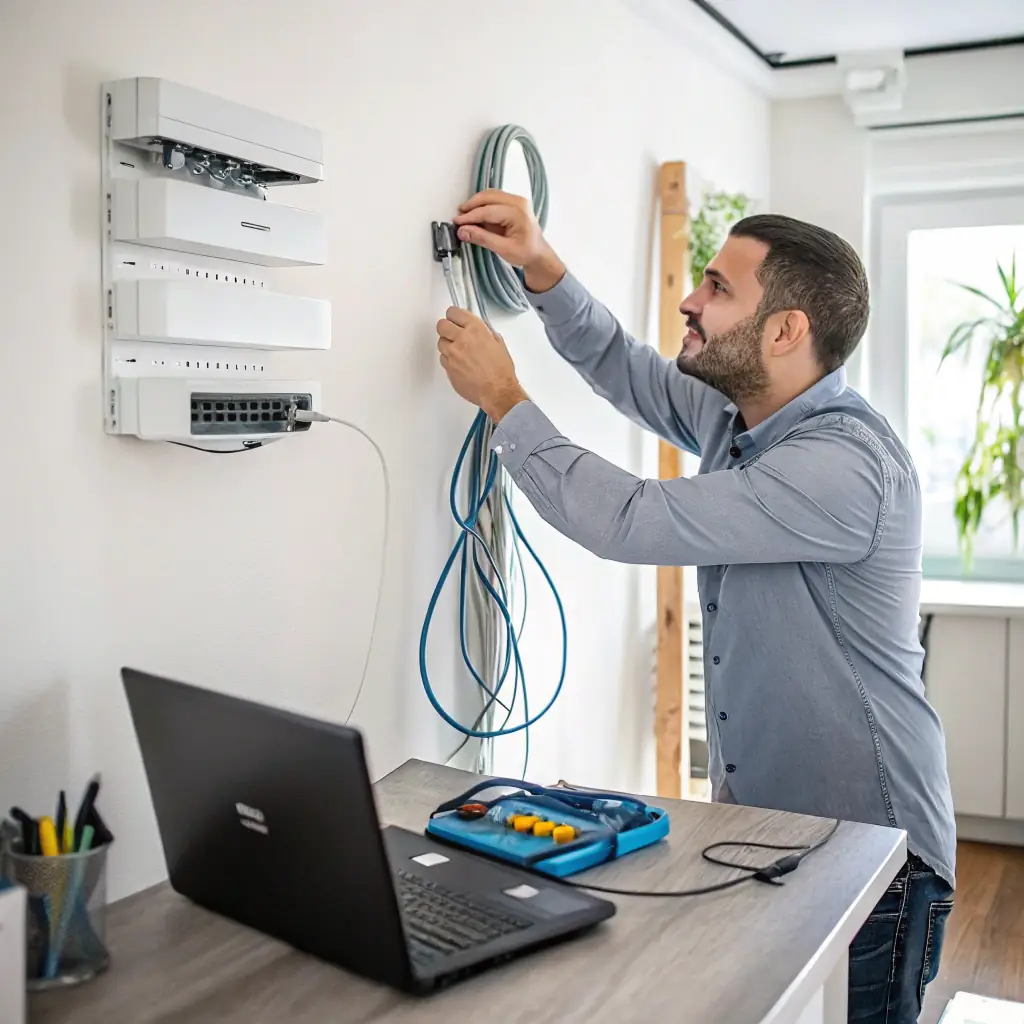Reliable by Spectum Cable Installer
Ensure seamless connectivity with Spectumcableinstaller’s, expert router setup and network solutions. We provide secure, high-speed wireless networks tailored to your home or business needs. Experience enhanced performance and reliable support.
Connecting Wireless Devices to Your Router
With most routers, you can choose to connect wireless devices (laptops, smartphones, tablets, etc.) to your network manually or with the push of a button, using the WiFi Protected Setup (WPS) method.

To connect your device to WiFi:
- Open the settings for managing connections on your device and look for Wireless or WiFi. The location of wireless settings will depend on the device you’re trying to connect.
- Make sure your device’s WiFi setting is ON.
- Locate the WiFi network name on your device and select it.
- Enter your WiFi password and select Connect or Join.
- WiFi Protected Setup (WPS) is a secure way of connecting to WiFi without entering the password.
- Make sure your wireless device supports WPS or Push ‘N’ Connect.
- Instructions slightly vary based on the router you have.
Sagecom 5260 Router
To connect your device to WiFi:
- Press the WPS button located on the side panel of your router.
- Press and hold the WPS button for 5 seconds until the WPS light flashes to enable pairing mode.
For more information, refer to the Sagecom 5260 manual.
Netgear R6300v2 Router
Netgear refers to the WPS method as “Push ‘N’ Connect.”
To connect your device to WiFi:
- Press the WPS button on the side of the router.
- Within two minutes, press the WPS button on your wireless device or follow the WPS instructions that came with the device.
For more information, refer to the Netgear R6300v2 manual.
WiFi Router Troubleshooting
Most issues you might encounter with Spectrum Business Email, like missing email messages or contacts, can usually be resolved with a few quick steps.
Before troubleshooting email problems, first make sure you’re using the correct email setting, and that you have a working internet connection.
The following tips will help to resolve issues with your WiFi router:
Take a Speed Test
If you’re experiencing low wireless signal strength, take a Spectrum Speed Test.
Determine whether the source of the issue is with your wired or wireless connection before taking the speed test.
- Use an Ethernet cord to connect your computer to your modem.
- Take the Spectrum Speed Test.
- If your wired speed test results fall below your current plan’s range, troubleshoot your wired connection first.
- If your wired speed test results are good, then your slow WiFi speed is likely due to an issue with your wireless connection.
Environment Troubleshooting
Several factors may impact your WiFi speeds:
- Competing Devices: The more devices connected to your wireless network, the less bandwidth each device can use. Try disconnecting devices when you’re not using them to improve overall performance.
- Older Devices: Older devices use older wireless technology, which may actually affect the performance of all devices on your network.
- Competing Networks: Your computer can check for wireless networks in the area that may be competing for bandwidth.
- Distance from Your Router: The best signal is within about 125 feet of your router, with a clear line of sight. Try moving your device closer to your router.
- Signal Obstacles: Your router should be in the most central spot in your home, away from anything that might block its signal.
- Time of Day: If you’re experiencing slow speeds during peak usage times (generally 5-9 PM), check your speeds during a off-hours to see if they improve.
- Security Settings: If all of your devices are experiencing a slow connection, check your network’s security settings.
- Other Sources of Interference: Move your WiFi devices away from other transmitting devices, such as baby monitors, cell phones and Bluetooth devices, or turn those devices off when not in use.
Restart your Modem
If you’re having trouble with your wired connection, try restarting your modem:
- Unplug the modem.
- Turn off the router and computers and/or mobile devices.
- Plug the modem back in and wait two minutes.
- Turn on the router and wait two minutes.
- Turn on the computers and/or mobile devices.
Learn more about restarting your modem.
Check Your Equipment
- Check that you’re using Spectrum Business-issued equipment.
- Make sure all Ethernet cables are securely plugged in.
- If your modem and router are turned on and properly connected with an Ethernet cable, the internet LED on the router should be ON.
- If a computer is turned on and connected to the router by an Ethernet cable, the LAN LED should be ON.
- Check to make sure that your wireless device is compatible with the network that you selected (2.4 GHz or 5 GHz).
Verify Wireless Settings
Make sure that the wireless Network Name (SSID) and wireless security settings on the computer and router match exactly.
A sticker with your Network Name (SSID) and Network Key (WiFi Password) info should be located on the bottom or side of your router. Find out more about locating your WiFi network name and password.
Note: If you set up an access list in the Advanced Wireless Settings screen, you have to add each wireless computer’s MAC address to the router’s access list.
Check Network Settings
Make sure your computer’s network settings are correct.
Wired and wirelessly connected computers need to have network (IP) addresses on the same network as the router. The simplest way to do this is to configure each computer to get an IP address automatically using DHCP.
